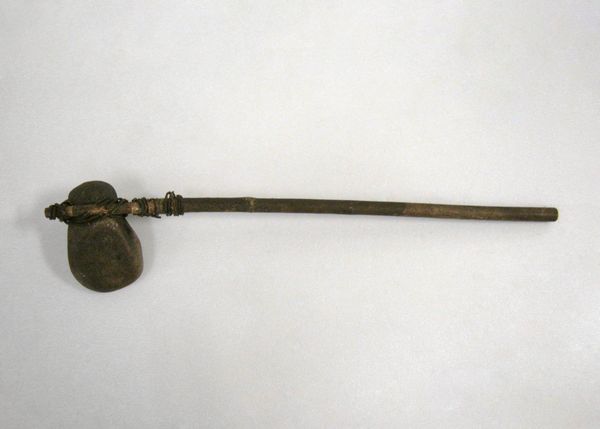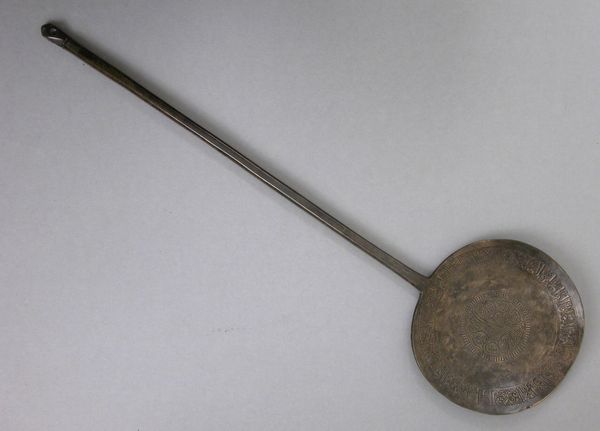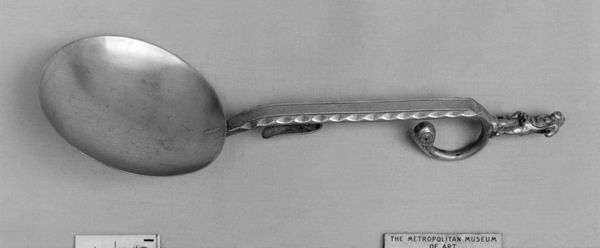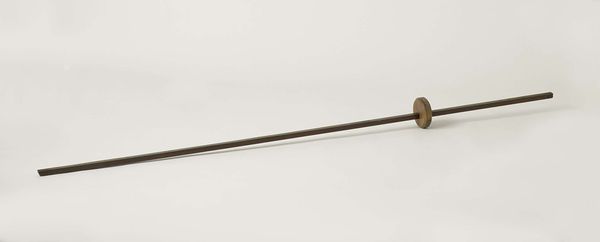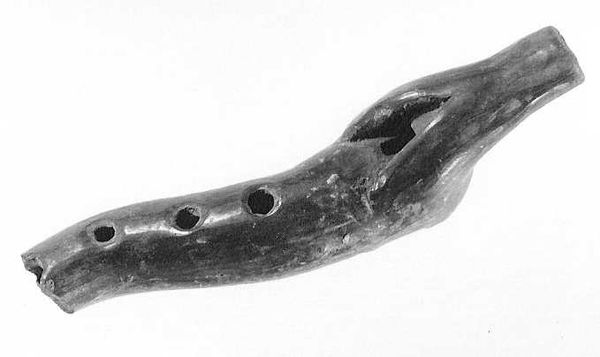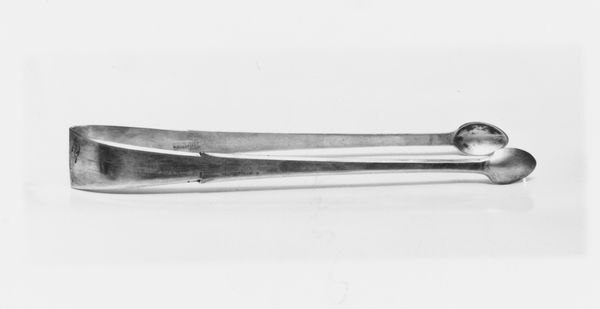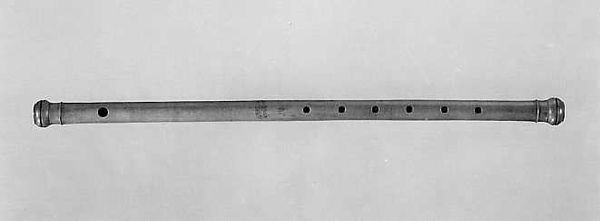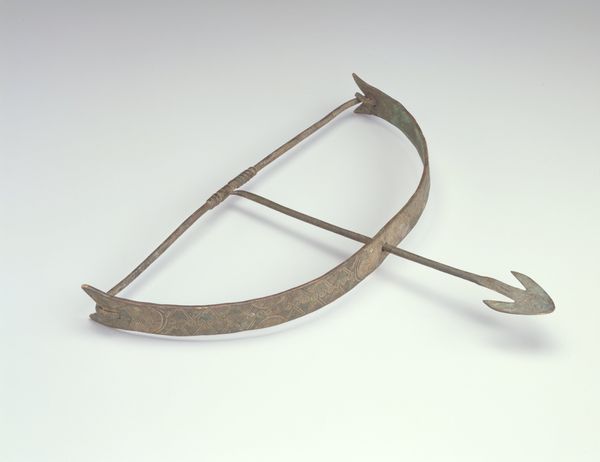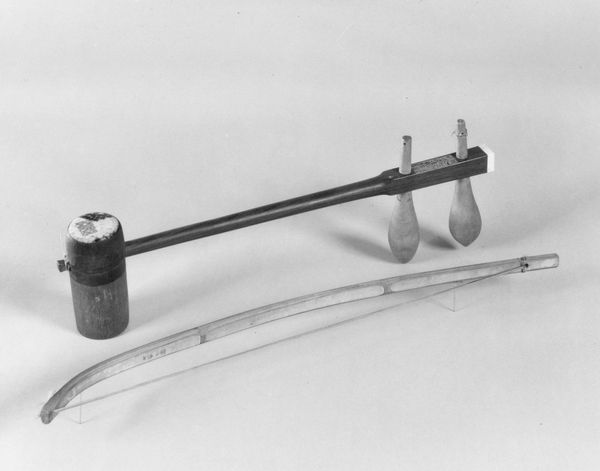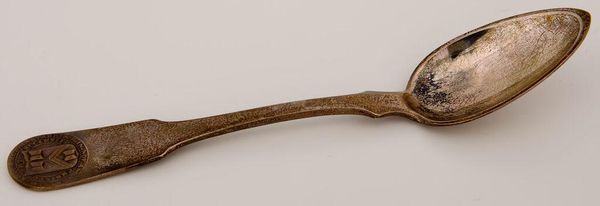
Half Moon (bugle or flügelhorn) in D 1800 - 1889
0:00
0:00
brass, sculpture
#
brass
#
germany
#
sculpture
#
sculpture
#
black and white
#
musical-instrument
#
monochrome
Dimensions: Bell Diam. (widest).15.1 x L. (perpendicular to bell) 44.6cm (5 15/16 x 17 9/16in.)
Copyright: Public Domain
Editor: We're looking at "Half Moon (bugle or flügelhorn) in D," made sometime between 1800 and 1889 in Germany, currently residing here at the Met. It's brass and sculptural, and I’m immediately drawn to its simple, almost elegant form. It seems to speak to a specific cultural moment. What do you see in this piece, particularly regarding its social context? Curator: I see a confluence of military and civic identity. These instruments, especially in 19th-century Germany, were vital in both military bands and local town bands. Their function extended beyond mere entertainment; they signaled authority and social cohesion. Consider the craftsmanship – the deliberate shaping of brass, reflecting a certain level of technological advancement celebrated at public events, displays of cultural capital if you will. Editor: That makes sense. I was also wondering, could its visual simplicity be interpreted as a kind of design language reflective of the time? Aesthetically speaking, did it serve a higher symbolic purpose? Curator: Absolutely. Simplicity in design often reflects the ideals valued by society at the time: a focus on functionality, precision, and order. The “Half Moon” evokes a sense of control and authority – attributes prized during periods of state-building and social regulation. Plus, instruments were becoming industrialized… a sign of changing production means during that period of rapid change. Editor: So, in essence, even this 'simple' musical instrument served as a powerful marker of cultural and political developments of 19th-century Germany? Curator: Precisely! The flügelhorn speaks volumes about the public role of art and the politics embedded in what might seem like everyday objects. Editor: This conversation has completely changed how I'll look at these types of art objects from now on! It’s not just music, it's social history made sonorous. Curator: And remember, art in the 19th Century in Europe was also deployed on a larger imperial stage: both an export of European civilization and an import of global aesthetics that informed the styles and musical cultures.
Comments
No comments
Be the first to comment and join the conversation on the ultimate creative platform.

